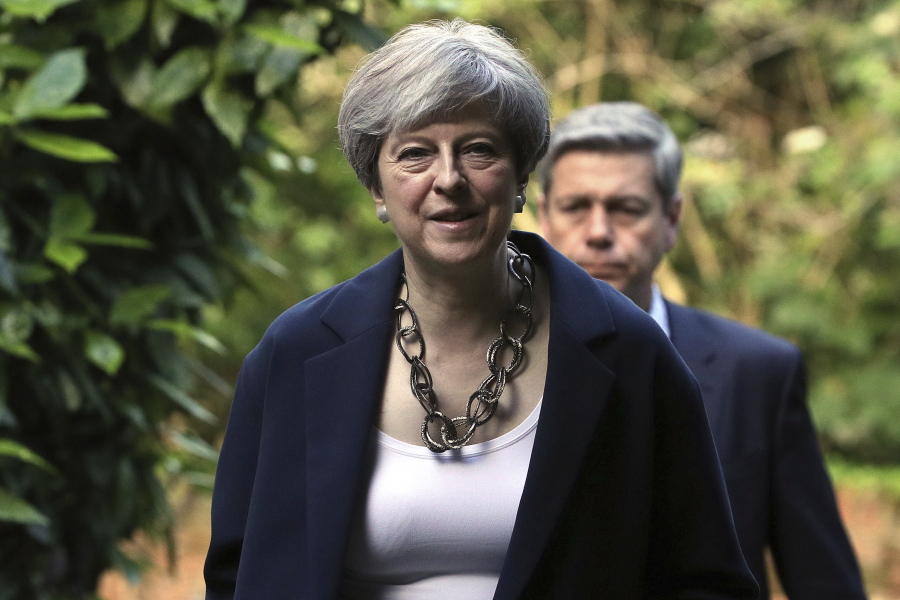LONDON — When Britain voted last week in an election that ended with Prime Minister Theresa May hanging onto her job by a thread, Brexit wasn’t on the ballot.
Even though the country had split nearly down the middle in last year’s referendum — 52 percent to 48 — and continues to be closely divided, none of the major parties ran on a platform of reversing the public’s decision to leave the European Union.
The vote has nonetheless been a jolt to the country’s exit plans, raising the fears of die-hard Brexiteers, the hopes of those favoring a more limited separation from European allies and the question of whether May will be around to steer the course she’s charted toward a sharp rupture.
Although May on Monday managed to quiet talk of any immediate ouster, she is still considered unlikely to stay on over the next two years, as exit talks unfold.
May had called the election expecting a mandate for her hard Brexit agenda as the country prepares to launch formal divorce talks with the E.U. next week.
But the voters delivered instead a muddled message that leaves Britain without a clear direction as it prepares for the most important change to its global role in decades.
“We now have a Parliament that’s gridlocked,” said John Springford, research director for the London-based Center for European Reform. “It doesn’t appear that there’s a majority for hard Brexit, a majority for soft Brexit, or certainly not a majority for remain. It’s a very confused picture.”
In a measure of just how confused, Springford said he could see the results pushing in either direction — toward “a chaotic, hard Brexit because they can’t reach a deal,” or toward a much less severe break “because the soft Brexiteers are emboldened.”
“It’s very hard to say which way it will go,” he said.
What is clear, however, is that events have not gone Theresa May’s way.
Until Monday, May had refused to give an inch on her Brexit plans, which she announced to great fanfare earlier this year. Despite an election in which she and her Conservative Party lost their majority in Parliament, she and her surrogates had insisted in recent days that the country’s plans to ask Europe for a clean break following nearly a half-century of union would not be affected.
But late Monday afternoon, May suggested there may be some flexibility after all, promising in a contrite appearance before her party’s backbenchers to “listen to all voices” in the party on Brexit and build a more consensual approach.
The statement — part of an appearance in which May also vowed that “I got us into this mess, and I’m going to get us out of it” — followed days of growing agitation from within her party over a strategy of simply soldiering on.
May’s willingness to take blame for the election loss Monday appeared to have won her favor from her party colleagues, who said she had effectively ended talk of an imminent coup.
But party members said she would still have to prove she understands that while she may have the will to continue on as normal with her Brexit plans, she no longer has the votes.
Just how vulnerable she has become was underscored Monday when Ruth Davidson, leader of the Scottish Conservatives, emerged from a meeting with the prime minister and emphasized that the government would have to “put our country’s economic future first and foremost in our minds as we go ahead with Brexit.”
It was a coded but clear message, one that runs counter to May’s consistent refrain that controlling immigration will be the country’s top priority in talks, and that economic impacts will come well behind.



